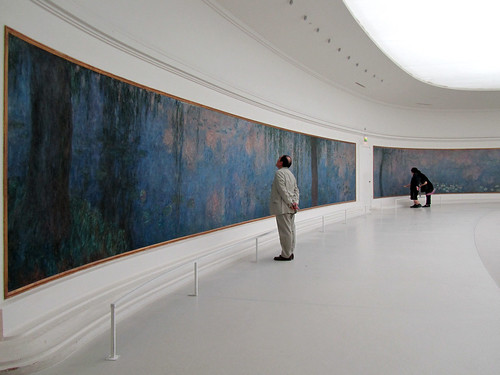It shouldn’t be any surprise that the main road of the village of Giverny is named after its most famous (former) resident, the Impressionist painter Claude Monet. Afterall, without his fame, it is unlikely that thousands of visitors would flock daily between April and October to the village. He lived here for over 40 years, drawing inspiration from the kaleidoscopic garden just outside his house and the adjacent water lily pond/garden.


The star attractions of the village are undoubtedly Monet’s House and Gardens, and the Musée des Impressionnismes Giverny. Apart from these, the Ancien Hôtel Baudy and the Église Sainte-Radegonde de Giverny are getting considerable attention as well from the visitors, particularly the latter, for the burial site of Monet and his family can be found in the grounds of the church.
In addition, the tourism board has done an excellent job in setting out a trail of cultural walking tour of the Giverny Village. Along this route of approximately 4km (give or take an hour walk), 20 points of interest are identified with information panel planted in front of them. We did try to complete the trail but was unable to do so, as the path parallel to the Aqueduc des Moines had been closed off, most likely for safety reason given the high water level of River Seine in recent months.
Continue reading »

Musée Marmottan Monet is a gem. A little out of the way perhaps, it sits just at the eastern edge of Bois de Boulogne. There are no pomps to announce its presence just beyond a small playground in mainly, from what I gathered, a residential area. However, what’s hidden behind the seemingly plain façade is another story altogether.
The museum is one primarily dedicated to Impressionism, an art movement which I can’t seem to get enough of. I may as well admit now that I hold an annual pass to Musée d’Orsay so I could visit anytime in the year to indulge in my whims for the romance in Impressionist works, not to mention the added bonus of entry to Musée de l’Orangerie whenever I wish. Paris was central to the birth of Impressionism and I believe no better city could have been chosen for it to flourish. Today, Paris is also the best city to admire many of the masterpieces produced during the short time-span of the movement.
Continue reading »

Given a mention of Paris and Impressionist art, most would think Musée d’Orsay right off the bat. I don’t blame them. It is a magnificent museum and perhaps my favourite among the many in this city. However, just across the Seine, there is a smaller museum that boasts a quaint collection of Impressionist art. It’s a pity that this place is often overlooked by visitors but for me, that’s good news because it means it’s never too crowded at Musée de l’Orangerie.
The main attraction of this museum though lies in two oval rooms, forming the sign of the infinity loop. Within the rooms, eight rectangular painted landscapes with waterlily can be found. This is where Monet’s masterpieces are on display for everyone to admire. It is so very easy to just sit in quietly (there are benches in the centre of the rooms) and gaze at the paintings. Of course, to get the real thing, I could also take a trip out to Giverny. If only time is not such a premium nowadays…
















